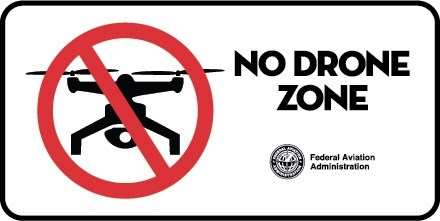FirearmsAs of February 22, 2010, federal law allows people who can legally possess firearms under applicable federal, state, and local laws, to legally possess firearms in this park. It is the responsibility of visitors to understand and comply with all applicable state, local, and federal firearms laws before entering this park. As a starting point, please visit our state’s website. Federal law also prohibits firearms in certain facilities in this park; those places are marked with signs at all public entrances. 
FAA Photo Unmanned Aircraft in the National ParksRegarding the use of model airplanes, quadcopters, drones that are used for any purpose, including for recreation or commerce.Superintendent's CompendiumThe Superintendent’s Compendium is the summary of park specific rules implemented under 36 Code of Federal Regulations (36 CFR). |
Last updated: April 17, 2025
